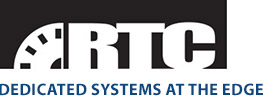Powering Machine Intelligence at the Edge
As the demand for edge devices to be both powerful AI compute Engines along with being low power took the talents of a very creative group at ETA Compute. ETA Compute founded in 2015, was driven by the exciting world of AI at the edge. In the short time since their inception, the company has been able to obtain a number of Patents that have address power and performance in a very novel way that is claimed to be 10 times more efficient then others.
How this is done
Most digital processors in use today are synchronous, which is to say various elements within the digital processor operate synchronously in response to a common clock signal. The power consumption of synchronous digital processor may be estimated by the formula
p=0.5fcv2,
Where: p=power consumption,
f=clock frequency,
c=average internal capacitance charged or discharged on
each clock cycle, and
v=power supply voltage.
For example, assume that a synchronous digital processor can be operated with a 1 GHz clock frequency at a power supply voltage of 1.0 volt. Further assume that, when operated at 1 GHz and 1 volt, the power consumption of the processor is 0.5 watt. With these assumptions, a processing task that requires 1 million clock cycles can be completed in 1 millisecond with an energy cost of 0.5 watt×1 millisecond=0.5 mill joules.
However, suppose that a time period of 1 second was actually available to complete this processing task. The task could be performed by operating the processor with a clock rate of 1 MHz. A power supply voltage of only 0.4 volts may be sufficient to run the processor with a 1 MHz clock. In this case the power dissipation of the processor (fcv^2) would drop to 0.5(1/1000)(0.4)2=0.08 mW. However the processor would run for a full second to complete the task, so the energy cost of the task would be =0.08 mW*1 second=0.08 mJ. In this example operating the processor at a lower clock speed and commensurate lower voltage reduces the energy consumption by a factor of about 6x better compared to intermittent full speed operation. In general, the energy cost of a processing task will be minimized if the task is completed over the maximum available time period at the slowest possible clock speed and power supply voltage.
Current production processor integrated circuits are synchronous and the methodology and tools for designing synchronous processor circuits are well developed, so long as the processor circuit is designed to operate from a power supply voltage substantially above the threshold voltage of the transistors comprising the processor. While research papers have shown that near-threshold operation of synchronous processors (i.e., operation with a power supply voltage near the transistor threshold voltage) may be possible, process variations and operating temperature variations can cause the delay of near-threshold circuits to vary by a factor of up to 100. Additionally, for near-threshold operation, transistor leakage currents are neither well-modeled nor well-controlled in production processes. Thus modeling delay accurately in circuits for near-threshold voltage operation is challenging, and current design tools are not suited to the design of near-threshold synchronous processors. As a consequence, near-threshold voltage operation in synchronous designs has been limited to research only.
It is possible to dynamically change the clock speed and/or power supply voltage for a synchronous processor in response to varying processing demand. However, an additional problem with synchronous processors is a need to reset/pause the processor whenever the clock frequency or voltage is changed. This results in wasted power and time that limits the benefits of dynamically changing the clock speed and/or power supply voltage.
The Market Reaction
In a recent collaboration between ROHM and Eta Computer, the combination of ROHM’s sensor expertise and the Eta’s low power MCU is focused at bringing about a Wi-SUN compatible sensor node to deliver one of the highest performing, lowest power solutions for smart networks.
The nodes coming from the ROHM and Eta Compute partnership will be designed for frequent, low-latency communication that draws less than 1 µA when resting and, more importantly, only 1 mA while sensing. This enables customers to configure devices to sense frequently and still maintain a long-life. The nodes will be compatible with Wi-SUN technology, which is based on the IEEE 802.15.4g standard and backed by the Wi-SUN Alliance.
Applications such as speech and image recognition are the most obvious, but there are many that would benefit by the ASIC that operates in an asynchronous mode for the highest energy efficiency. This architecture is more desirable for edge device applications where the amount of resources (both memory and compute) is limited. It also offers a solution for protecting securing personal information without the need for relying on the cloud for inferencing.
ETACore is a perfect compliment to low power wans that is energy constrained. Initial traction for the devices has come in four areas:
- Always-on Speech – EtaCore has a power efficiency that opens the door of many OEM applications for voice recognition that are constrained by power.
- Video and Imaging – Techniques for video and image classification, clustering and sequence analysis is perfect for threat analysis and fire control systems.
- Sensor Fusion – For motion and environmental sensors based on accelerometers, chemical sensors and gyros. EtaCore enables sensors hubs to perform more comprehensive algorithms for real-time updates.
- Digital Health – Sensors and machine learning from bedside diagnostics to predictive modeling.
The Eta ECM3531 is based on the ARM Cortex-M3 and NXP Coolflux DSP processors. The SOC includes a power-leading Analog to Digital Converter (ADC) senor interface and highly efficient PMIC circuit. EtaCore’s dynamic voltage scaling logic automatically drives the ECM3531 to the lowest energy possible for a given workload. This combined with the power efficiency of inferencing use less resource across the chip.
The power management techniques employed position this as the only viable solution that can operate at <5uA. This allows for creative solar or other energy harvesting techniques to be used for continues use. Battery operation in many applications exceeds the life expectancy of the application at more than 10 years using a small coin cell.
As latency and real-time response become more important to the application, the EtaCore offers a perfect solution at the edge.

